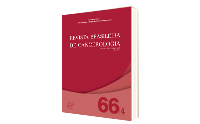Correlação entre a Espessura do Músculo Adutor do Polegar e o Estado Nutricional
DOI:
https://doi.org/10.32635/2176-9745.RBC.2020v66n4.1044Palavras-chave:
Desnutrição, Avaliação Nutricional, Estado Nutricional, Antropometria, NeoplasiasResumo
Introdução: A desnutrição e altamente prevalente na população oncológica e aumenta a morbidade e mortalidade nos estágios avançados da doença. A espessura do musculo adutor do polegar (EMAP) parece ser uma variável importante para avaliar o compartimento muscular. Objetivo: Estabelecer um ponto de corte da EMAP para desnutrição entre pacientes oncológicos hospitalizados. Método: Estudo transversal, entre 100 pacientes oncológicos internados em um hospital geral de Porto Alegre – RS, com idade ≥20 anos, admitidos nas enfermarias e avaliados nas primeiras 72 horas de admissão hospitalar. Foi realizada a avaliação subjetiva global (ASG), mensurados peso, altura, circunferência de braço (CB), prega cutânea tricipital (PCT), circunferência da panturrilha (CP) e a EMAP da mão dominante (EMAPD) e não dominante (EMAPND); calculada a circunferência muscular do braço (CMB) e o índice de massa corporal (IMC). Resultados: Conforme a ASG, 31% e 33% eram, respectivamente, moderadamente e gravemente desnutridos. Pacientes desnutridos apresentaram significativamente menores valores de IMC, CB, PCT, CMB, CP, EMAPD e EMAPND, bem como maior tempo de internação e óbito. O melhor ponto de corte da EMAPD para o desfecho desnutrição foi 13,2 mm (sensibilidade 65% e especificidade 75%) e, para EMAPND, foi 13,3 mm (sensibilidade de 65% e especificidade 77%). Conclusão: O melhor ponto de corte da EMAPD para o desfecho desnutrição, proposto neste estudo, foi 13,2 mm e, para EMAPND, foi 13,3 mm. No entanto, mais estudos são necessários para confirmar estes achados.









